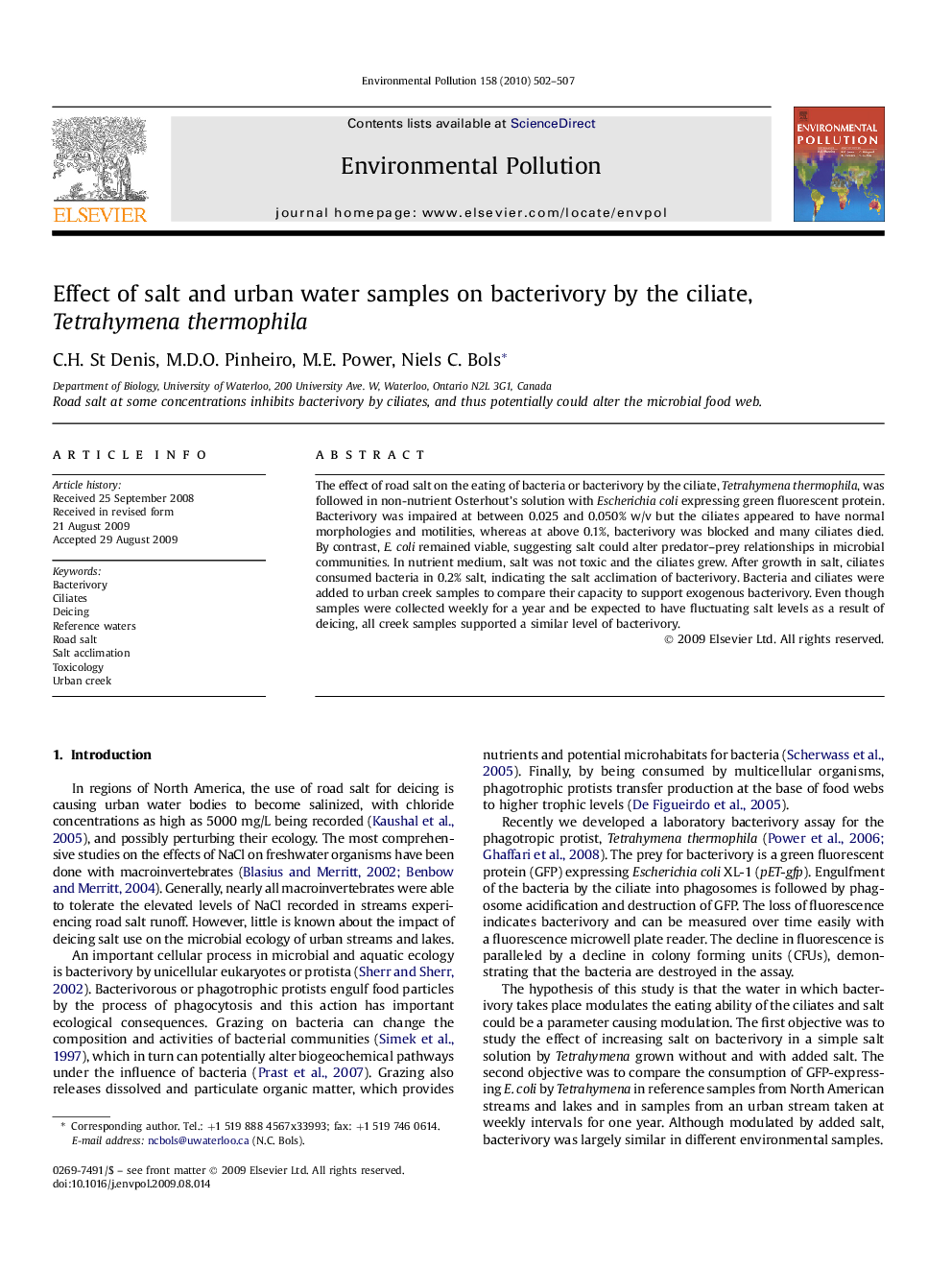| Article ID | Journal | Published Year | Pages | File Type |
|---|---|---|---|---|
| 4425590 | Environmental Pollution | 2010 | 6 Pages |
The effect of road salt on the eating of bacteria or bacterivory by the ciliate, Tetrahymena thermophila, was followed in non-nutrient Osterhout's solution with Escherichia coli expressing green fluorescent protein. Bacterivory was impaired at between 0.025 and 0.050% w/v but the ciliates appeared to have normal morphologies and motilities, whereas at above 0.1%, bacterivory was blocked and many ciliates died. By contrast, E. coli remained viable, suggesting salt could alter predator–prey relationships in microbial communities. In nutrient medium, salt was not toxic and the ciliates grew. After growth in salt, ciliates consumed bacteria in 0.2% salt, indicating the salt acclimation of bacterivory. Bacteria and ciliates were added to urban creek samples to compare their capacity to support exogenous bacterivory. Even though samples were collected weekly for a year and be expected to have fluctuating salt levels as a result of deicing, all creek samples supported a similar level of bacterivory.
